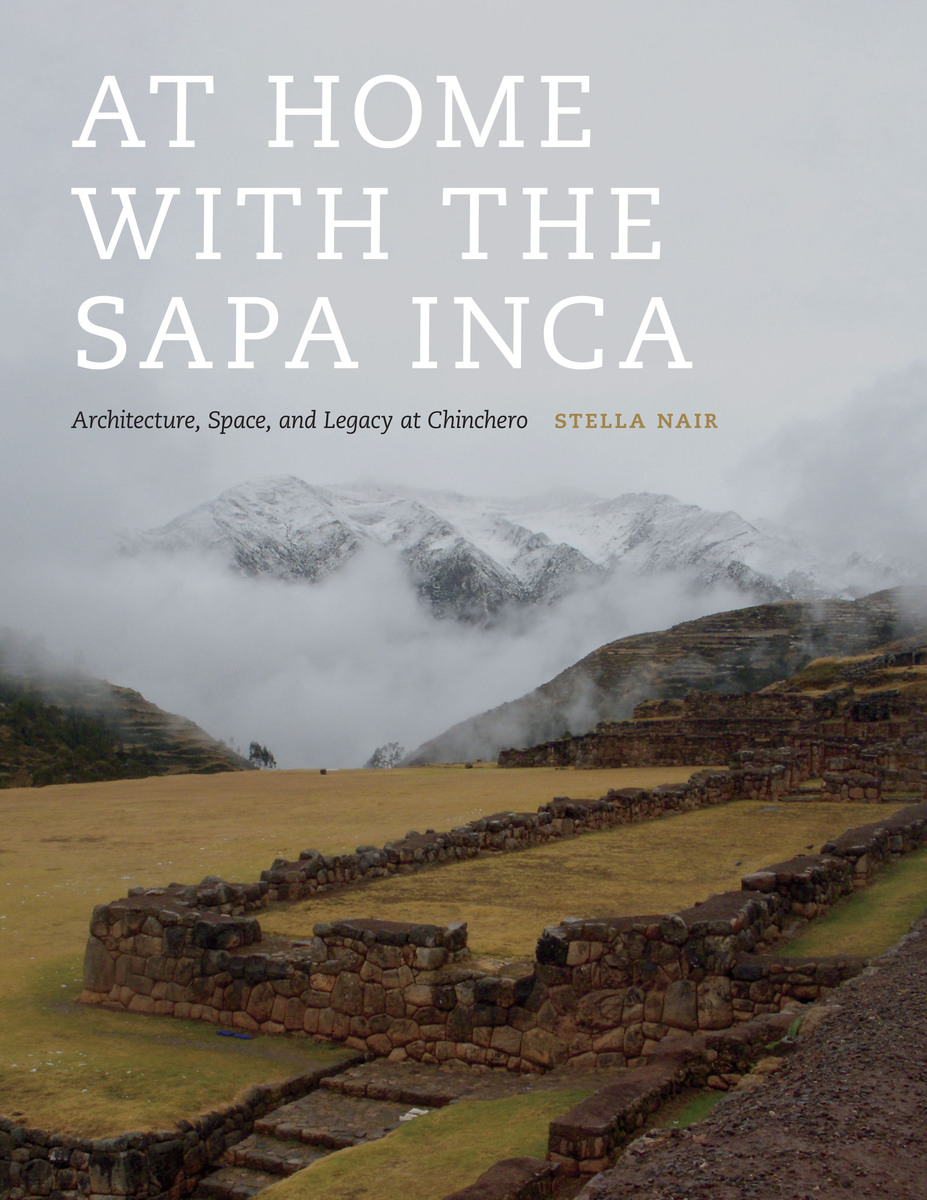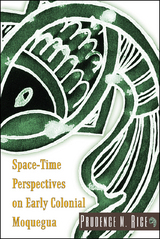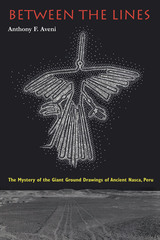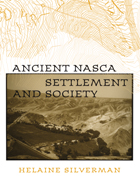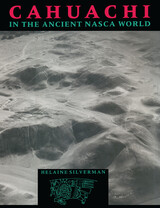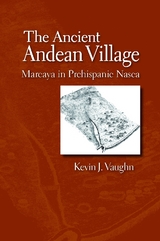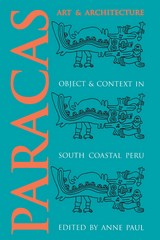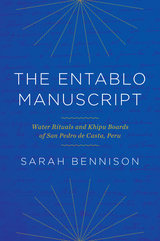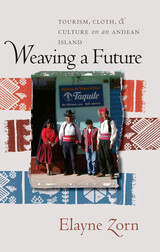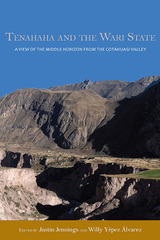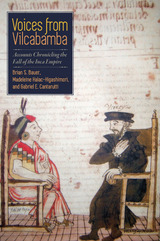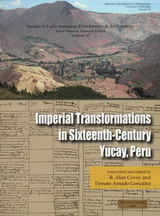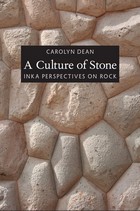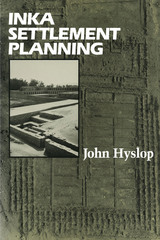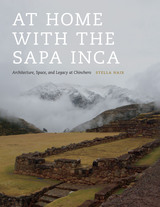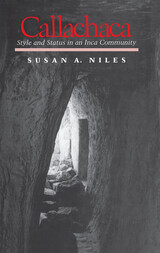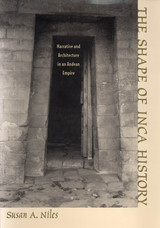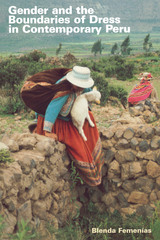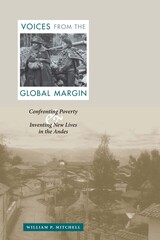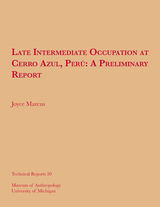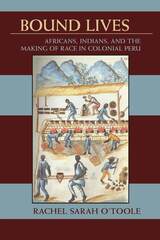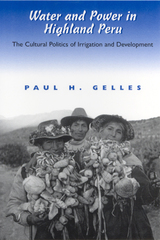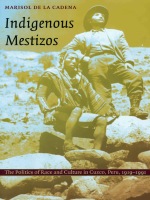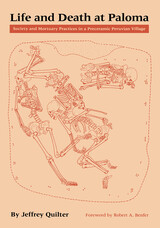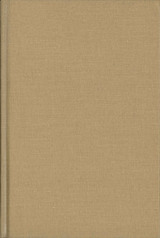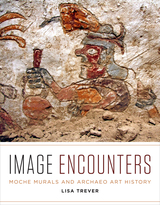"This volume is a major contribution to the field. It represents a comprehensive study of an Inca royal estate and presents the remarkable amount of information that an architectural study can glean from even a 500-year-old ruin. The book’s contributions not only consist of new information regarding the structure and function of the estate at Chinchero but also represent a major addition to the study of Inca architecture in general. . . . Nair is eminently qualified to conduct this study, and her arguments and conclusions are extremely well supported."
— Gordon F. McEwan, Professor and Chair of Anthropology, Wagner College; author of The Incas: New Perpectives and Pikillacta: The Wari Empire in Cuzco; and coauthor of Moray: Inca Engineering Mystery
"This book will be heralded by architectural historians, art historians, archaeologists, ethnohistorians, and Andeanists of all disciplines. . . . The author builds significantly on previous studies of Inca royal estates (chiefly those by Morris and Niles) by focusing on the site of Chinchero. . . . The book will make a significant contribution to Andean studies and will be a welcome addition to studies of Inca royal estates, the operations of the Inca state, Inca architecture and the built environment, and Inca history."
— Carolyn Dean, Professor, History of Art and Visual Culture, University of California, Santa Cruz, and author of A Culture of Stone: Inka Perspectives on Rock and Inka Bodies and the Body of Christ: Corpus Christi in Colonial Cuzco, Peru
"Nair's book is an important contribution to Andean scholarship, demonstrating that a nuanced appreciation of architectural space can result in surprising insights about an ancient culture."
— Journal of Interdisciplinary History
"This is exactly the sort of book I wanted. This is exactly the sort of book you probably want, if you’re interested in the Inca and even possibly if you aren’t. Of all the Inca Imperial material I’ve read, this is the one I would recommend most highly."
— marissalingen.com
"This is an impressive and important contribution to Andean studies and to the anthropological study of landscape and architecture. The volume is full of nuanced analyses of the construction and experience of Chinchero. Nair presents fascinating interpretations throughout the book and touches on a wide range of theoretical domains. . . . [A] wonderful and erudite book that will inform analyses of the Inca state for years to come."
— American Anthropologist
"As eloquent and sure-footed as it is insightful and practical, both generalists and specialists will appreciate the volume’s detailed analysis of Inca architecture and landscape rooted in close observation and measurement, archaeology, ethnohistoric sources, and the acuity of a phenomenological methodology. . . In sum, At Home with the Sapa Inca is a critical addition to Andean studies."
— College Art Association Reviews
"This engaging, meticulously researched, and clearly written monograph is well suited for course adaptation. It promises to become one of the classic studies of the Inca and their magnificent architectural legacy, and to serve as puncu, an opening from which future studies will follow."
— Latin American Antiquity
"Insightful, evocative, and thoroughly researched, Stella Nair’s new book explores the distinctive architectural spaces and structures of the royal Inca palace…. This wonderful work will be of great interest to Andeanists of all disciplines. Its highly accessible nature makes it ideal for undergraduate and graduate courses in architectural history, art history, and archeology, anthropology, and the history of Latin America."
— Hispanic American Historical Review
"[At Home with the Sapa Inca fosters] a deeper understanding of Inka culture, especially as it was borne out through elite practices and space…[It] would be useful for both casual and specialist readers interested in Inka and architectural history. It offers a real insights into Inka life and architectural style."
— Ethnohistory
"This important book offers a superb study of Topa Inca’s palace complex at Chinchero, Peru, organizing its analysis around Inca concepts and architectural features, and through the spatial progression through which the site would have been experienced. Nair foregrounds how Inca architecture delineated and sacralized space while producing stages for performance, and she provides and excellent reading of the politics of place and movement."
— The Americas
"El detallado análisis arquitectónico efectuado por Stella Nair, a partir de sus observaciones en Chinchero y la atenta lectura de diversas fuentes etnohistóricas coloniales, convierten a este libro en un importante referente para el estudio e interpretación de la arquitectura imperial incaica."
— Cuadernos del Qhapaq Ñan
"Clearly written and beautifully illustrated, At Home with the Sapa Inca will be of great interest to scholars interested in learning about the production of space at the center of an ancient empire, and how the intended meanings and actions of these spaces changed relative to historical and political transformations."
— Cambrige Journal of Archaeology
"Remarkable…The book's seven chapters expertly guide the reader trough the experience of space at Chinchero."
— Sixteenth Century Journal
